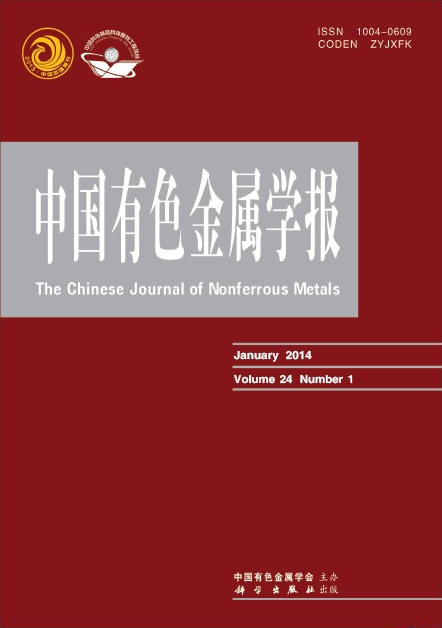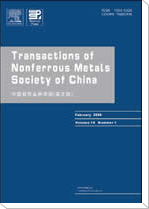(1. 中南大学 材料科学与工程学院,长沙 410083;
2. Institute of Materials Science, Lausanne Federal Institute of Technology, Lausanne CH-1015, Switzerland)
摘 要: 采用机械合金化法制备纳米Cu-10%Nb合金,通过显微硬度测量以及高分辨透射电镜观察,对该合金粉末在室温球磨过程中的微观结构演变和形变孪生特性进行研究;利用局部应力集中模型分析形变孪晶的形核机制。结果表明:随着球磨时间的增加,该合金硬度(HV)不断升高,球磨120 h后可达4.8 GPa;该合金在球磨初期以位错胞结构为主;球磨50 h后,Cu平均晶粒尺寸减小至约50 nm,部分区域出现纳米形变孪晶;继续增加球磨时间,孪晶数量增加,孪晶界强化效果显著;由于孪生将促进纳米晶粒的进一步细化,球磨120 h后,纳米晶尺寸减小到20 nm以下。
关键字: Cu-Nb合金;机械合金化;形变孪晶;孪晶界强化;纳米材料
Cu-Nb alloy powders
(1. School of Materials Science and Engineering, Central South University, Changsha 410083, China;
2. Institute of Materials Science, Lausanne Federal Institute of Technology, Lausanne CH-1015, Switzerland)
Abstract:The microstructure evolution and deformation twinning characteristics of nanocrystalline Cu-10%Nb alloy during mechanical alloying (MA) were investigated by microhardness measurements, transmission electron microscopy (TEM) and high resolution TEM (HRTEM) observation. A local stress concentration model was proposed to explain the deformation twin nucleation mechanism of Cu-Nb alloy. The results show that the Vickers microhardness of the powders increases gradually with the increase of milling time, and reaches 4.8 GPa after 120 h milling. The main structure of the powders is the dislocation cells in the initial milling. After 50 h milling, the average Cu grain size decreases to about 50 nm, and nano-deformation twins begin to form in some regions. With the continued increase of the milling time, the number of twin increases, and the twin boundary strengthening enhances accordingly. Due to the deformation twinning will contribute to further refine the nano-grains, after 120 h milling, the nano-crystalline size decreases to below 20 nm.
Key words: Cu-Nb alloy; mechanical alloying; deformation twinning; twin boundary strengthening; nanostructured material


